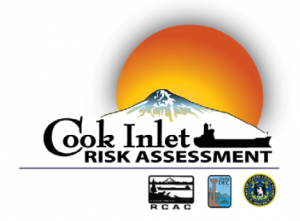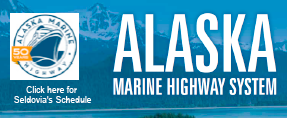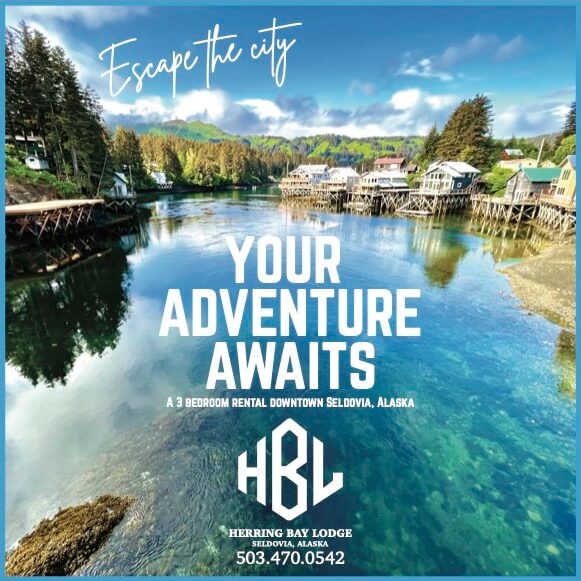Cook Inlet Risk Assessment Identifies Ways to Reduce Cook Inlet Maritime Risks
by Lynda Giguere, Director of Public Outreach, Cook Inlet Regional Citizens Advisory Council
 For immediate release March 6, 2013
For immediate release March 6, 2013
Contact: Tim Robertson, 907.234.7821
Risk assessment team identifies ways to reduce Cook Inlet maritime risks Team recommends options for immediate implementation; further consideration; elimination
The Cook Inlet Risk Assessment Advisory Team has narrowed down a list of twenty-five risk reduction options (RROs) for the Cook Inlet Navigational Risk Assessment. The team discussed the merits of each RRO at a day-long public meeting in Anchorage on February 22, and following an in-depth discussion of each proposal gathered from studies, previous reports and public comments, identified eight for immediate implementation; eight for further consideration, and nine for exclusion.
“I was impressed by the meaningful dialogue and expertise in the room,” said Mike Munger, Executive Director of Cook Inlet RCAC and member of the Cook Inlet Risk Assessment Management Team. “We have moved significantly closer towards our goal of safer marine transportation in Cook Inlet.”
The following is a list of each risk reduction option considered and its final category.
Recommended for immediate implementation, or continuation:
• Continue to improve crew training, bridge team management, and communications. Encourage the establishment of best practices for crew training standards for vessels operating in ice conditions
• Continue to improve winter ice rules and guidelines
• Establish a Harbor Safety Committee to promote implementation of RROs and support ongoing improvement of safety by the maritime community
• Improve the Subarea Oil and Hazardous Substance Contingency Plan
• Ask the federal government to promulgate final regulations requiring vessel response plans for non-tank vessels
• Seek continuous improvements in spill response equipment that is appropriate for Cook Inlet conditions.
• Maintain project depth in Cook Inlet, especially at Knik Arm Shoal through dredging
• Improve cell coverage where there is none on marine waters in Cook Inlet
Meriting further evaluation:
• Enhanced vessel monitoring, situational awareness, and communications through applying Automatic Identification System (AIS) technology, 2-way communications via AIS, and sharing weather observation from ships and other sources
• Enhance current navigational charts, current gauges, and Coast Pilot
• Improved ice monitoring capabilities. Consider applying ice monitoring through enhanced radar and dissemination of information over the Internet
• Increased rescue towing capability
• Encourage harbors to notify the U.S. Coast Guard if they deem a vessel unseaworthy
• Construction of a cross-inlet pipeline from Drift River to Nikiski
• Map sub-sea infrastructure (both abandoned and active)
• Encourage alternate inspections or audits for workboats
Excluded from further consideration:
• Traffic Separate Scheme (TSS) and Vessel Tracking Service (VTS) (Panel prefers a non-regulatory approach to establishing routing measures and vessel monitoring. TSS and VTS require implementation through U.S. Coast Guard regulations, are overly prescriptive, and not likely to be funded in today’s fiscal climate.)
• Establishing an International Maritime Organization (IMO) Particularly Sensitive Sea Area (PSSA) (PSSAs are used to regulate international waterways and traffic; Cook Inlet’s traffic is primarily domestic)
• Satellite tracking of vessels (Panel prefers real-time data on ship location that is gained from AIS; satellite transmission delays make it less useful for quickly identifying and responding to potential problems)
• Long-range identification and tracking system (Panel prefers real-time data)
• Improve aids to navigation (no improvements were identified)
• Remove out-of-service platforms and subsea pipelines (removal cannot be required until leases expire)
• Place quick-release mooring line hooks at the Port of Anchorage (may have unintended consequences)
• Position/pre-approve use of Oil Spill Eater Product (use of bioremediation products is determined by the Alaska Regional Response Team; it is not within the purview of this group to recommend specific products)
The Cook Inlet Risk Assessment project will next refine the list of priority RROs and establish a plan for further evaluation. Three reports have been completed to date as part of the assessment, including a Cook Inlet Vessel Traffic Study, Spill Baseline and Causality Study, and Consequence Analysis.
Background: The Cook Inlet Regional Citizens Advisory Council (Cook RCAC), Alaska Department of Environment Conservation and U.S. Coast Guard launched the Cook Inlet Risk Assessment to examine the risk of oil spills posed by the marine vessels transiting through, near and/or servicing the region. The goal of the risk assessment is to answer the following questions:
• What can go wrong? • How likely is it? • What are the impacts? • Can the impacts be mitigated?
The risk assessment is examining the current types and sizes of vessels plying Cook Inlet and dominant accident types and identifying future oil spill risks based on vessel size, type and frequency. The first phase of the risk assessment was limited to a semi-qualitative analysis, relying primarily on historical data, expert opinion, and lessons learned from prior studies. Study results provided a basis for the identification and initial ranking of risk reduction measures.
We have sought extensive stakeholder engagement throughout the process of defining and analyzing risks and identifying risk reduction measures.
Cook Inlet RCAC secured funding for the risk assessment from the State of Alaska, U.S. Coast Guard, National Fish & Wildlife Foundation, Tesoro Alaska and the Prince William Sound Regional Citizens Advisory Council.
More information can be obtained at www.cookinletriskassessment.com
For more information: Lynda Giguere, 907.398.6205 or Giguere@circac.org
Category: Uncategorized








 Seldovia Time
Seldovia Time









